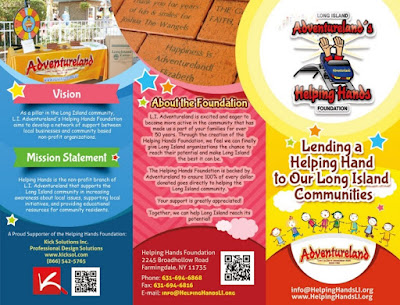Media Alert and Media Advisory
Read for Sept. 4, 2024: A news release, as we’ve already discussed, allows you to announce something or react to something in a public way through content that you hope the media utilizes.
A news release is thus a public document that you want to have published.
A “media alert” or “media advisory” is similar, in that it is a way for you to get media attention. But instead of writing a news story or feature story that you hope gets used by the media, an advisory or alert (they are equivalent terms) is a heads up to the media outlets that you circulate it to. It usually tells them that you’re doing something that is deserving of their coverage, although in can be used for other purposes, such as introducing a source at your organization who is a willing expert that media can contact and interview.
In effect, the common alert means that you’re formally asking for media coverage of an upcoming newsworthy event. Thus, like a news release, a media alert (I have seen the term “alert” more than “advisory,” and will use that term from now on—but “advisory” is a perfectly accurate and understood variation of the term) reflects your understanding of what is news to the media outlets that you are targeting.
The alert is usually done in a ritual format, which we will review some examples of. Basically, a paper version would be on letterhead (like a news release) and have a news release heading that includes the same kind of contact information. It would not usually say “for immediate release” simply because you don’t expect the media to publish your alert; it’s more like an internal media memo.
The alert will have a large, bold label on it (and it says “Media Alert” or “Media Advisory”). After that, you write a headline and a short lede paragraph that describe the main point. Sometimes the “narrative” explanation will be several paragraphs, but one is usually adequate.
However, rather than leading to a story, the alert then includes a list of facts about the newsworthy thing, arranged in an outline form with the basics facts (who, what, when, where) serving as sidebar headings.
An alert, on paper, is generally limited to one page. To save space, while there is usually some room between items in the outline, text in the lede paragraph and in the outline items is normally single spaced, rather than double space as a news release would be. Like news releases, alerts are most commonly disseminated via email--the image on this post is an example of an emailed media alert from Mount Mercy University sent to the MMU Times and other Cedar Rapids media outlets.
Organizations are not consistent about posting alerts publicly on their web sites. News releases are almost always posted because they are meant to be public information that you want anybody to see. Alerts are most often over “public” events, so you don’t generally care if members of the general public see them, yet the alerts are not written nor structured with the expectation of public consumption. Still, I have posted examples of alerts in a sample area on Brightspace, so you can see alerts are not all that difficult to find (again, some of the sample documents are labeled “advisory” rather than “alert”) on the web.
Because the alert is a request for coverage to the media, and because it's usually for a public event, it's common that you would prepare both an alert and a news release for the same event. The news release, unlike the alert, would be written like a news story and would always be posted.
When do you use an alert? The main thing is that you must use news judgement about the publics or audience that the media outlets you are targeting serve. You only should issue an alert if you really do have something that is therefore worthwhile for that particular medium (TV station, newspaper, etc.) to cover.
An alert is especially likely if you are hosting an event that would make for compelling images and/or video and audio coverage—your hope is that a photographer or videographer is assigned to come to your event to create visual content that will benefit your organization. An alert should be sent out a least a week before an event--longer before the event if the media outlet you target is itself a weekly or monthly publication.
Examples of situations that would prompt you to send out an alert:
- An important speaker is giving a newsworthy speech at your organization. Or a prominent musical act is performing. In other words, a person or musical group that is doing some sort of program that would be of interest to the media.
- A new program, feature, building or facility of enough impact to be newsworthy is being opened and a ceremony or official opening is being held. Note the sample alert is for the opening of the athletics complex at Mount Mercy University. Organizations do plan some events as “stunts” (world's larges hotdog or something like that) to draw media attention, too. This can be a bit iffy, but can also be effective, if done cleverly.
- A rare and important announcement is set. An alert can be used to announce a news conference if an important statement (and important in this case means from the media’s point of view, not yours) is going to be made.
As you will see from the samples, alerts are sometimes used for other purpose, such as giving media a heads up on expertise or sources you are ready to provide should journalists need background information on a newsworthy topic. Or, you may announce your attendance at an important trade convention to media that is covering that convention. These are valid but secondary purposes for alerts—the main and most common use of the media alert is a heads up to journalists on a planned upcoming newsworthy event.
Alerts often do not exist alone. If Taylor Swift donates $20 million to MMU to construct a fine arts building and comes to give a free concert on the Rohde Family Plaza as part of the grand opening of that center—yup, there sure as shooting would be an “alert.” But, as you can imagine, that story is so big it would prompt a whole host of PR writing artifacts over time—a news release about the gift, a news release (and maybe alert) when ground is broken, and several news releases about the concert itself.
However, with some “smaller” events that you don’t necessarily want the full public to attend, you might use an alert with no associated news release to give journalists a heads up. And when both a release and an alert are used for the same thing, they are usually delivered or circulated separately.
Alerts are also often part of something larger that we’ll cover soon—the media “kit,” which is a grouping of several related PR artifacts.
Of course, you’re going to be writing an alert in lab. You’ll prepare some additional alerts later this semester. Alerts are common, but are not as common as the news release, which is still the most basic and most material that PR writers produce.
An alert is also not the only way that PR professionals will seek media coverage. Later in the semester we will cover query letters. A query (or pitch) letter is a letter (usually sent via email) where you let an individual journalist know of a story you think he or she is interested in. In contrast, while an alert does need to go to the right person at each media outlet, it is not a personal note to an individual journalist but rather a more general announcement soliciting attention from several media outlets. A query letter would go to Vanessa Miller, higher education reporter at The Gazette. An alert, on the other hand, would go simultaneously to The Gazette, KCRG, Iowa Public Radio, KWWL, KGAN, etc.



Comments
Post a Comment